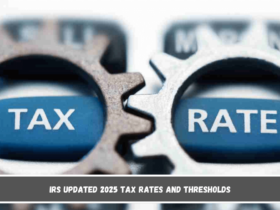Most Americans consistently fall short of their goal of having enough saved for retirement. However, because of how unstable the economy is, it is important for them, especially those who are getting close to retirement age, to put as much money into their retirement accounts as they can so that they can easily transition from working to being retired.
This is why the Internal Revenue Service (IRS) has changed some rules about how much people can put into retirement accounts. This is to help people who need more savings fill up their accounts.
The IRS just raised the annual limit on employee deferrals from $23,000 for 2024 to $23,500. This is the first step. Some plans at work that will see this increase are 401(k)s, 403(b)s, government 457 plans, and the federal Thrift Savings Plan.
But for people 50 and older, there is a catch-up contribution option that hasn’t changed and will stay at $7,500. This means that older workers could save a total of $31,000 in 2025.
The worry is that the Vanguard’s How America Saves report says that in 2023, only 14% of employees maxed out their workplans, and that number is not likely to go down in 2024. The report also says that only 15% of people aged 50 or older who were in plans that offered catch-up contributions actually used them.
For 2025, there is a new “super catch-up” option for employees between the ages of 60 and 63. These employees can contribute up to $11,250, which is more than the standard $7,500 catch-up. On the other hand, CPA Richard Pon says, “Once you turn 64, you can only make the regular catch-up contribution amount and can’t make a super catch-up contribution.”
There isn’t a law that says employers have to offer a super catch-up contribution right now, so I think that an employer’s retirement plan needs to be changed to make room for a super catch-up contribution.

What are the IRS’s new IRA limits in 2025?
The biggest contribution you can make to an IRA is still $7,000. People aged 50 and up can make an extra $1,000 contribution.
However, this shouldn’t be your only type of retirement account; it’s important to have a variety of them for a healthy retirement portfolio. The income limits for putting money into traditional and Roth IRAs and getting the Saver’s Credit will go up in 2025:
- For single taxpayers covered by a workplace retirement plan, the phase-out range rose to between $79,000 and $89,000, from $77,000 to $87,000.
- For married couples filing jointly, if the spouse making the IRA contribution is covered by a workplace retirement plan, the phase-out range increased to $126,000 to $146,000, from $123,000 to $143,000.
- For an IRA contributor not covered by a workplace retirement plan and married to someone who is covered, the phase-out range is $236,000 to $246,000, up from $230,000 and $240,000.
- For a married individual filing a separate return who is covered by a workplace retirement plan, the phase-out range is not subject to an annual cost-of-living adjustment and remains between $0 and $10,000.
As for Roth IRAs, there’s also an adjustment:
- For single filers and heads of household, the income range where Roth IRA contributions phase out is $150,000 to $165,000, an increase from the previous $146,000 to $161,000.
- For married couples filing jointly, the Roth phase-out range now spans $236,000 to $246,000, up from $230,000 to $240,000.
- For those married filing separately, the range is still $0 to $10,000 and doesn’t adjust annually.
For 2025, the Saver’s Credit, which is meant to help people with low to moderate incomes, will also have higher income limits.
The most a married couple can make and still qualify is now $79,000, up from $76,500. The limit has gone up from $57,375 to $59,250 for heads of household. The limit has also gone up from $38,250 to $39,500 for single filers or married people filing separately.
Read Also :- IRS Officially Announces Major Tax Changes for 2025 – There are several and they will affect millions of Americans











Leave a Reply